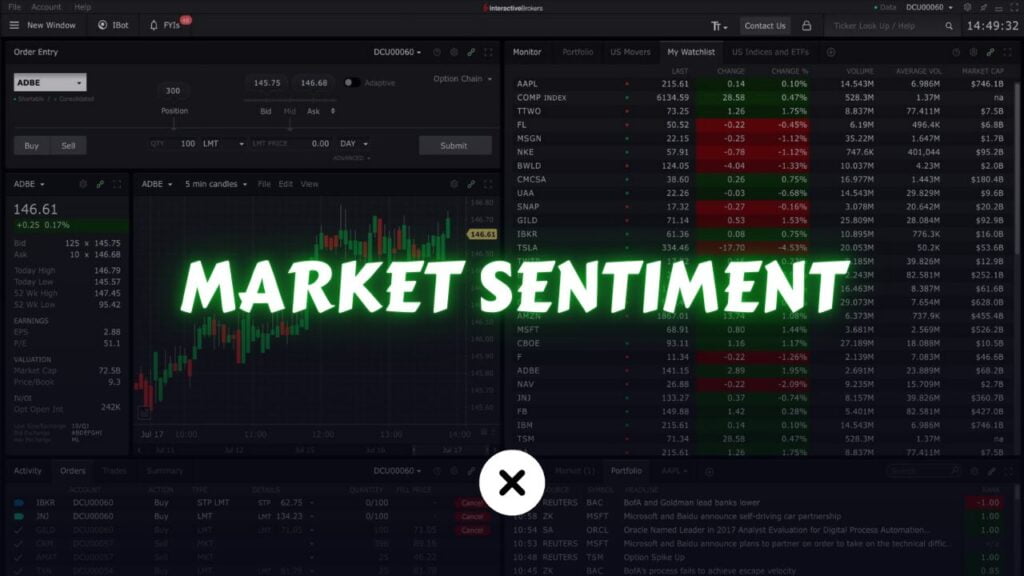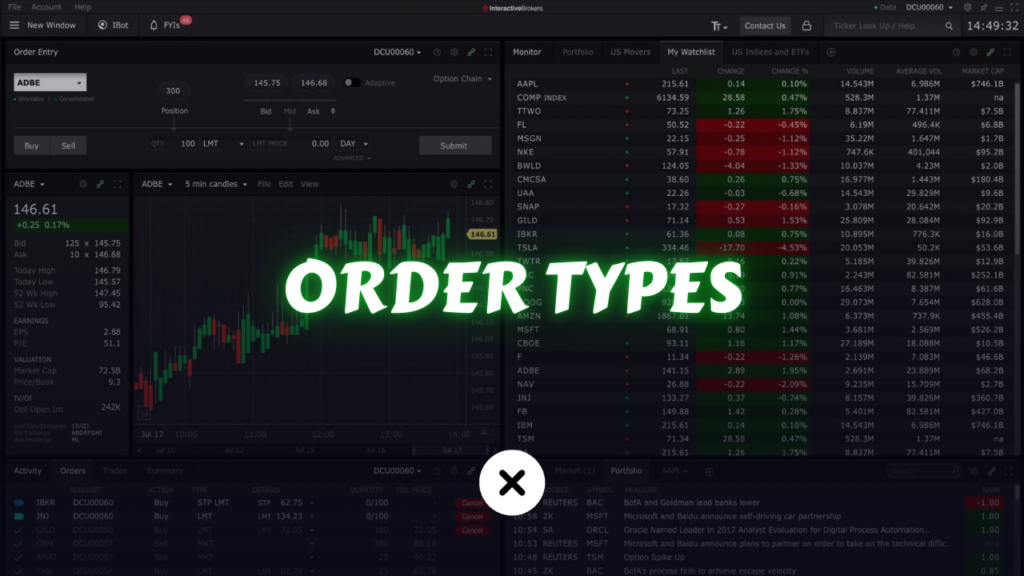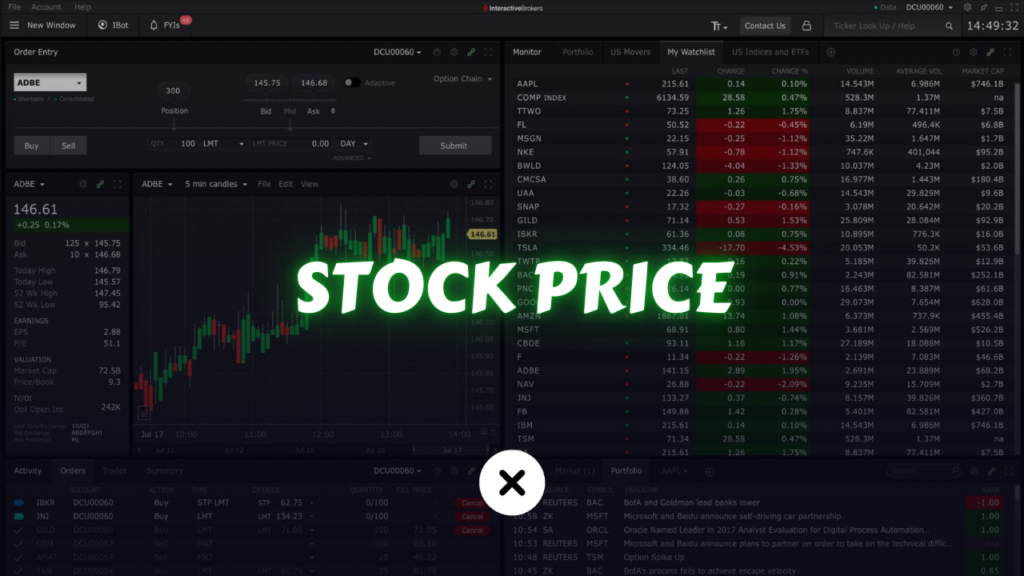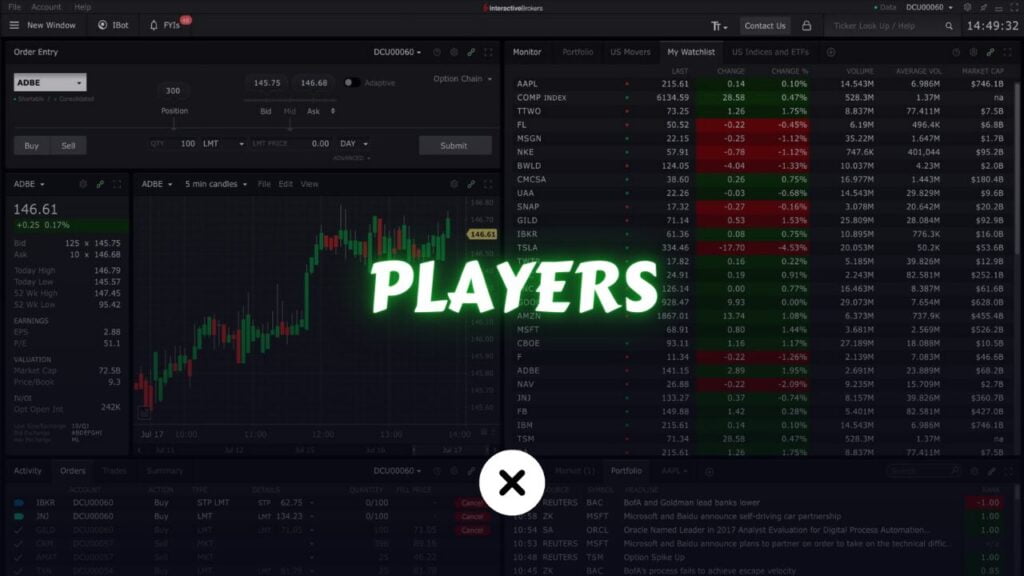Market sentiment is one of the most crucial yet often overlooked factors influencing financial markets. While fundamental and technical analyses are pivotal for assessing a security’s intrinsic value and price action, understanding market sentiment can offer invaluable insights into why market participants behave the way they do. In essence, market sentiment reveals the collective mood or attitude of investors and traders about the overall market or specific securities. This article dives deep into the concept of market sentiment—what it is, how it’s formed, how to gauge it, and how it ultimately impacts trading strategies and investment decisions.
In this in-depth guide, we will explore:
Table of Contents
This article is written for both novice and experienced market participants who aim to refine their approach to trading and investing by integrating the power of market sentiment into their decision-making process. By the end, you’ll have a comprehensive understanding of how emotions, news flow, and collective investor behavior can shape market outcomes and how you can leverage this knowledge to bolster your trading and investing strategies.
What Is Market Sentiment?

Market sentiment refers to the overall attitude, emotion, or tone of market participants toward a specific financial market, sector, or security. Sometimes called investor sentiment, it reflects how traders and investors feel about the future price direction. This collective feeling can range anywhere from extreme optimism to extreme pessimism.
Defining Market Sentiment
- Collective Mood: The dominant feeling or tone driving the market participants at a particular time.
- Emotional Biases: Market sentiment is susceptible to human psychology, which introduces biases like fear and greed.
- Subjective Measure: Unlike fundamental data (e.g., earnings, revenue, or balance sheets), sentiment can’t always be measured purely quantitatively. It may combine quantitative indicators (like volatility or put/call ratios) with qualitative analysis (like news headlines or social media chatter).
Why It’s More Than Just Hype
Market sentiment isn’t just a marketing buzzword or a passing phase of market excitement or panic. It has profound real-world implications for price movements. If the collective sentiment is bullish, investors may bid up prices faster than fundamental analysis would predict. Conversely, if sentiment is bearish, securities might drop below their “fair value.” Understanding how and why this happens can help you to enter or exit trades at more opportune times, manage risks effectively, and potentially gain an edge in your investing decisions.
Why Market Sentiment Matters
Market sentiment matters because it can drive short-term market movements and long-term trends. Even if fundamentals remain unchanged, a sudden shift in sentiment—triggered by news events, political developments, or economic data—can cause price movements that are disproportionate to any material change in a company’s intrinsic value.
Influences on Short-Term and Long-Term Markets
- Short-Term Volatility: In the immediate term, sentiment can create rapid price fluctuations. Traders who watch sentiment indicators can often ride short-term trends to capitalize on momentum.
- Long-Term Trends: Over extended periods, sentiment can push prices well above or below their fair values, creating bubbles (over-enthusiasm) or busts (over-pessimism).
Risk Management and Market Timing
- Early Warning System: Sudden changes in sentiment—especially extreme bullish or bearish sentiment—often precede market reversals. Recognizing these transitions can be crucial for risk management.
- Market Timing: While timing the market perfectly is nearly impossible, integrating sentiment analysis with fundamental and technical analyses can help traders identify periods of potential overvaluation or undervaluation.
Behavioral Finance Perspective
From a behavioral finance standpoint, market sentiment underscores the role of human emotions—fear, greed, herd mentality—that can irrationally move markets. A well-rounded strategy acknowledges these behavioral biases and manages them instead of ignoring them outright.
Key Factors Influencing Market Sentiment

Market sentiment doesn’t emerge from a vacuum. It’s shaped by multiple factors ranging from macroeconomic data to corporate earnings and political stability. Being aware of these drivers is the first step to understanding why sentiment might be bullish or bearish at a given time.
Economic Indicators
- GDP Growth: Strong or weak economic growth can influence how investors feel about corporate profits and job markets.
- Unemployment Rates: Rising unemployment often fosters pessimism, while falling unemployment typically encourages optimism.
- Interest Rates: Central bank policies can boost or dampen enthusiasm in riskier assets like stocks or high-yield bonds.
- Inflation Data: High inflation can trigger fear of eroded purchasing power, while stable inflation can engender confidence.
Corporate Earnings and Guidance
- Earnings Releases: Better-than-expected earnings can quickly uplift investor sentiment, potentially triggering buying sprees and price rallies.
- Forward Guidance: Companies’ outlooks on future earnings or revenue growth can either stoke further optimism or drag down market sentiment if the guidance is poor.
Geopolitical Events
- Elections: Political outcomes can dramatically shift policy expectations, thus altering market sentiment.
- Trade Relations: Tariffs, trade wars, or favorable trade pacts can sway how investors perceive future corporate profitability.
- Geopolitical Tensions: Wars, sanctions, or unstable regimes can quickly turn market mood sour.
News and Media Coverage
- Headline Impact: Sensational news headlines can rapidly fuel investor sentiment (positive or negative), often beyond what fundamentals suggest.
- Media Bias: Consistently negative or positive reporting can perpetuate an existing trend in sentiment, sometimes amplifying market moves.
Social Media and Online Forums
- Real-Time Information: Platforms like Twitter, Reddit, and dedicated finance forums disseminate sentiment rapidly.
- Influencer and Analyst Opinions: High-profile investors or “finfluencers” can shape crowd sentiment with bullish or bearish calls.
Market Liquidity and Fund Flows
- Institutional Inflows and Outflows: Large trades from pension funds, mutual funds, or hedge funds can shift sentiment if they’re interpreted as indicative of broader market views.
- Retail Investor Behavior: A spike in small investor participation often corresponds with heightened sentiment, whether that’s overly optimistic (e.g., at market tops) or overly pessimistic (e.g., at market bottoms).
Measuring Market Sentiment: Tools and Techniques
While market sentiment has a subjective dimension, there are several quantitative and qualitative methods to gauge how investors feel. Here’s an overview of some of the most commonly used sentiment indicators and tools.
Sentiment Indicators
- Volatility Index (VIX): Often referred to as the “fear index,” the VIX measures the market’s expectation of short-term volatility. A high VIX reading indicates fear, while a low VIX indicates complacency or confidence.
- Put/Call Ratio: Measures the volume of put options versus call options. A high ratio (>1) suggests bearish sentiment; a low ratio (<1) suggests bullish sentiment.
- Advance/Decline Line (A/D Line): Tracks the cumulative difference between the number of advancing and declining stocks. A rising A/D line indicates broad market participation, typically a bullish sign.
- Market Breadth Indicators: Tools like the McClellan Oscillator also measure broad participation in market advances and declines to assess sentiment strength.
Surveys and Polls
- AAII Sentiment Survey: The American Association of Individual Investors conducts weekly surveys measuring bullish, neutral, and bearish sentiment among its members.
- Institutional Investor Surveys: Various organizations poll large money managers to gauge professional sentiment.
Technical Analysis Tools
- Price Volume Analysis: Studying how volume behaves relative to price movements can help confirm or refute shifts in sentiment.
- Candlestick Patterns: Certain patterns (e.g., “hammer” or “shooting star”) can reveal intraday shifts in sentiment.
- Moving Averages Crossovers: Bullish or bearish crossovers can indicate changes in the broader market tone.
News and Social Media Sentiment Analysis
- Algorithmic Tools: Advanced trading firms and individual analysts use machine learning and natural language processing (NLP) to parse the sentiment in news articles or social media posts.
- Trending Topics: Hashtags or discussion spikes on platforms like Twitter or Reddit can reflect real-time shifts in crowd sentiment.
Contrarian Indicators
- Margin Debt: Extremely high levels of margin debt can be a sign of excessive optimism, while very low levels might indicate widespread fear.
- Short Interest: If a stock has very high short interest, it might signal excessive pessimism, potentially setting the stage for a short squeeze.
Types of Market Sentiment (Bullish vs Bearish)
Market sentiment typically falls into two broad categories: bullish (positive outlook) and bearish (negative outlook). Understanding these core sentiments is vital for assessing market conditions.
Bullish Sentiment
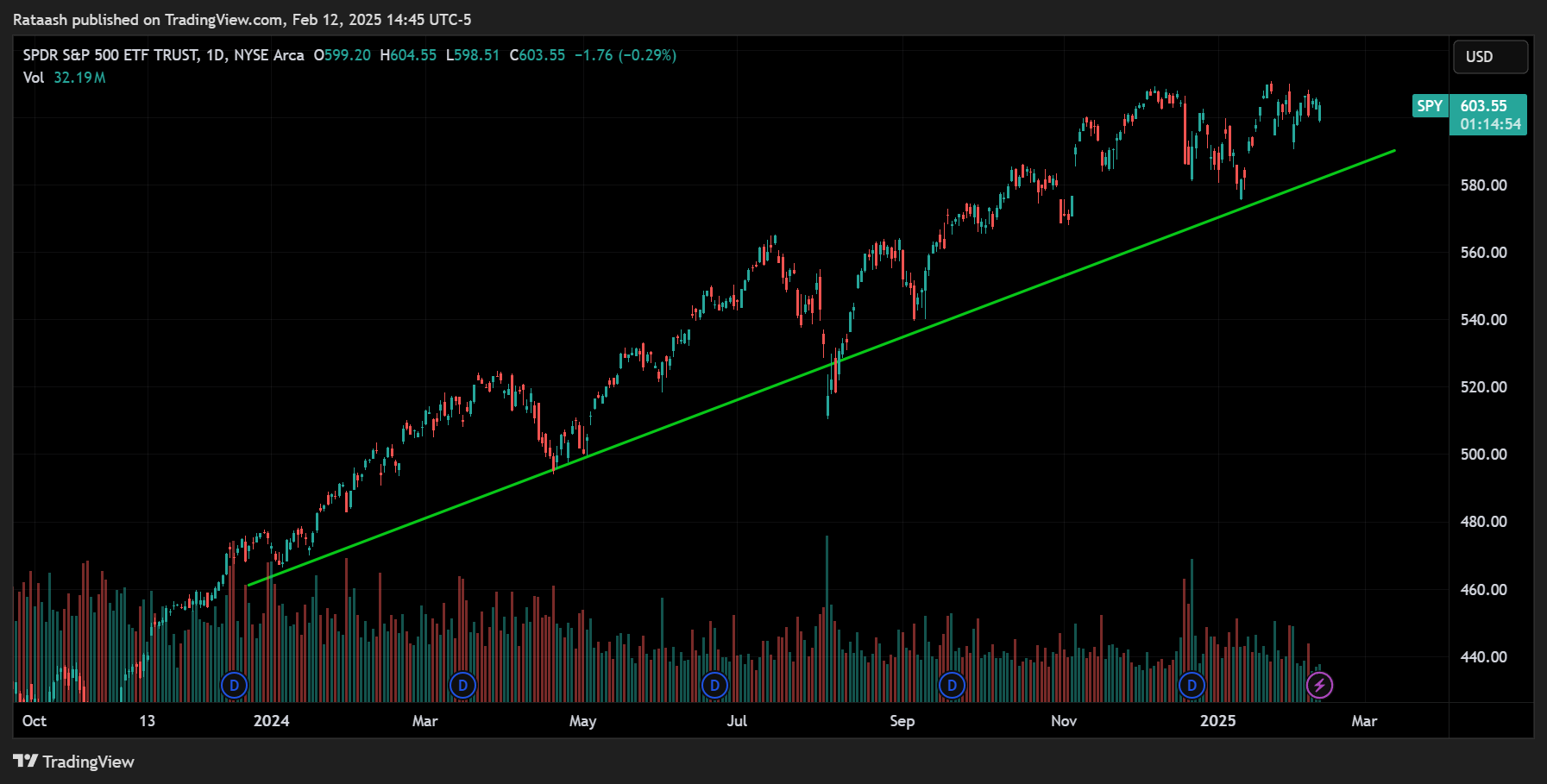
A bullish sentiment reflects widespread optimism. Investors anticipate higher prices and strong market performance.
Characteristics:
- Stock prices and market indices generally move upward.
- Trading volumes often rise because of increased participation.
- News cycles tend to be positive, focusing on growth, innovation, and profits.
- Investors may overlook negative data, rationalizing it as temporary or inconsequential.
Potential Risks:
- Overvaluation and speculative bubbles.
- Complacency that can lead to underestimating risks.
- Once the bullish sentiment shifts, the market can experience sudden and severe corrections.
Bearish Sentiment

A bearish sentiment reflects pessimism or fear. Investors expect declining prices and often reduce their exposure to riskier assets.
Characteristics:
- Stock prices and market indices generally trend downward.
- Trading volumes can be erratic, spiking during sell-offs.
- Negative news dominates, focusing on bankruptcies, layoffs, or negative economic data.
- Market participants may ignore positive developments, seeing them as insufficient to counter the negative backdrop.
Potential Risks:
- Undervaluation of fundamentally sound assets.
- Selling at or near market bottoms due to panic.
- Missed opportunities if the market stabilizes or rebounds.
Neutral or Mixed Sentiment
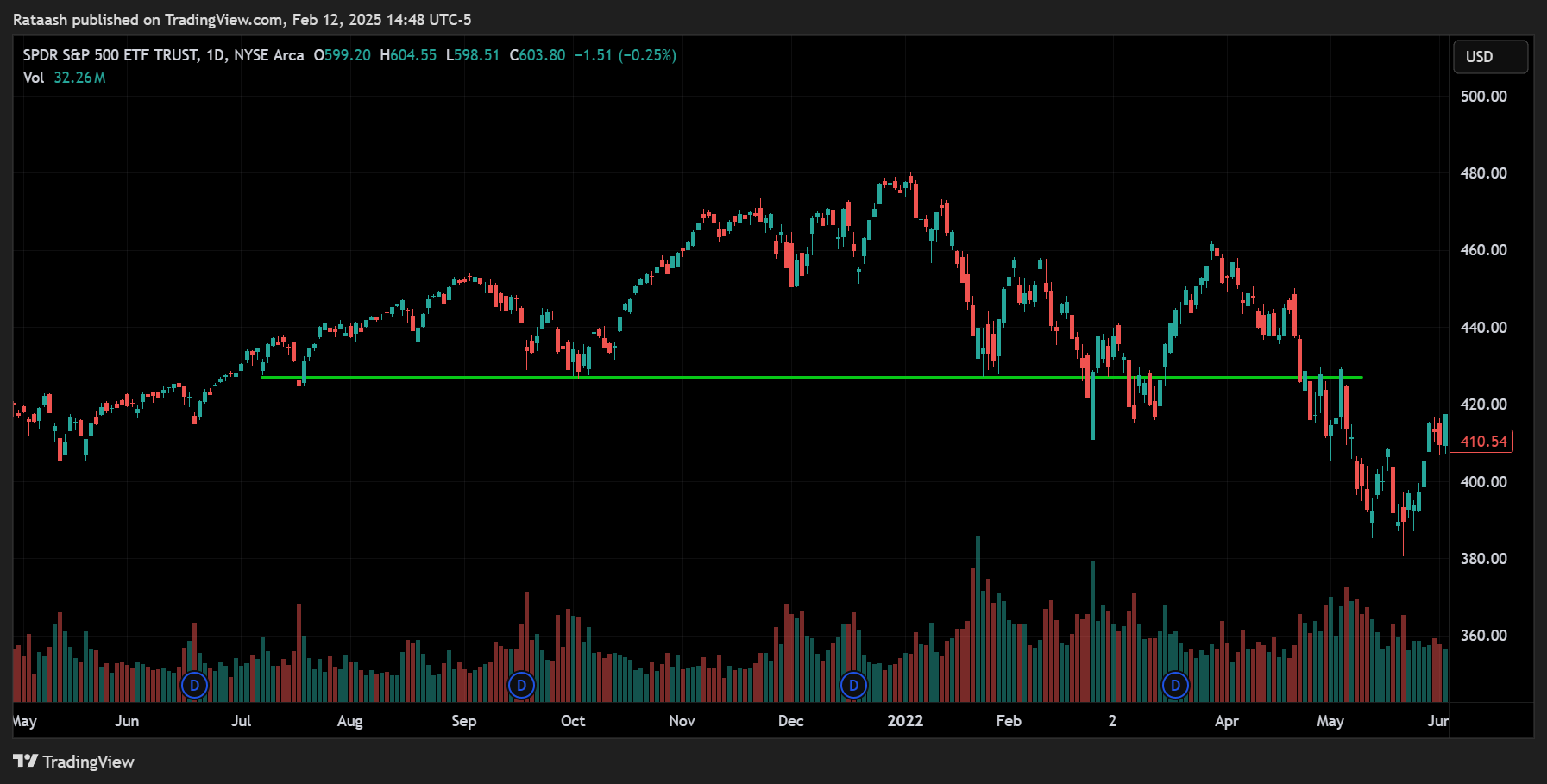
Not all markets are decisively bullish or bearish. Sometimes, sentiment is mixed or neutral, indicating indecision among market participants. In such cases, prices may move sideways, lacking a clear trend. Traders often deploy range-bound strategies or wait for clearer signals to emerge.
How Market Sentiment Shapes Different Trading Strategies

Market sentiment doesn’t just color the overall market atmosphere; it also shapes how different trading strategies are executed. Whether you’re a day trader, swing trader, or a long-term investor, incorporating sentiment analysis can significantly refine your approach.
Momentum Trading
- Core Idea: Buy high and sell higher, or short low and cover lower. Momentum traders thrive on trends.
- Role of Sentiment:
- Bullish Market: Momentum traders may ride upward trends fueled by strong bullish sentiment.
- Bearish Market: They may short stocks expected to continue downward under strong bearish sentiment.
- Example: A stock is hitting new highs day after day, accompanied by upbeat news and strong volume. This aligns with positive sentiment, making it attractive for a momentum-based approach.
Contrarian Investing
- Core Idea: Go against the crowd by buying when others are fearful and selling when others are greedy.
- Role of Sentiment:
- Overbullish Conditions: A contrarian might short or exit positions, anticipating a pullback.
- Oversold Conditions: A contrarian might buy undervalued stocks during extreme pessimism.
- Example: Warren Buffett’s famous quote, “Be fearful when others are greedy and greedy when others are fearful,” encapsulates contrarian thinking. If the put/call ratio is extremely high, a contrarian might sense an oversold condition and look for buying opportunities.
Swing Trading
- Core Idea: Capitalize on short-to-medium-term price swings within an established trend.
- Role of Sentiment:
- Identifying Reversals: Swing traders watch for sentiment extremes to catch reversals or corrections.
- Confirmation Tool: If sentiment aligns with technical signals (like support/resistance breakouts), it can reinforce trade conviction.
- Example: A swing trader might monitor social media sentiment spikes for a specific stock. If the sentiment quickly turns pessimistic due to some negative news while the technicals remain stable, the trader might look for a reversal swing opportunity.
Value Investing
- Core Idea: Buy undervalued stocks with solid fundamentals and hold them for the long term.
- Role of Sentiment:
- Sentiment-Driven Discounts: Negative market sentiment can push share prices of fundamentally strong companies below their intrinsic value, presenting buying opportunities.
- Contrarian Element: Value investors often act as contrarians, capitalizing on oversold market conditions.
- Example: During market panics, value investors like to pick up high-quality companies whose stock prices have been unfairly hammered down.
Day Trading
- Core Idea: Profit from intraday price movements, holding positions for seconds to hours.
- Role of Sentiment:
- News Flow: Day traders often monitor breaking news, economic releases, and social media for rapid sentiment shifts that can create quick price spikes.
- Volatility: Elevated sentiment-driven volatility can offer multiple intraday trading setups.
- Example: If a company releases unexpected earnings before the market opens, generating a burst of optimism, a day trader may trade the immediate price surge within the first hours of the session.
Utilizing Market Sentiment in Investment Decisions

Beyond trading, market sentiment also plays a critical role in shaping medium and long-term investment decisions. Institutional and retail investors alike need to acknowledge sentiment to avoid overexposure to market risk or to seize opportunities when they arise.
Asset Allocation
- Diversification Approach: If market sentiment is overwhelmingly bullish, some investors might re-evaluate their asset allocation to avoid overexposure to equities. Conversely, a strongly bearish environment might push them to add more defensive assets like bonds, gold, or cash.
- Rebalancing Frequency: Investors closely monitoring sentiment may rebalance more frequently to lock in profits or adjust positions according to perceived market extremes.
Position Sizing and Risk Management
- Incremental Investing: When sentiment is uncertain or volatile, allocating capital gradually (dollar-cost averaging) can mitigate the risk of mistiming the market.
- Scaling In and Out: Investors may scale out of positions as sentiment becomes extremely bullish, fearing an imminent correction. They might scale into positions gradually in a bearish climate, anticipating a market rebound.
Long-Term Outlook vs. Short-Term Noise
- Fundamental Focus: Long-term investors primarily rely on fundamental drivers such as earnings growth and cash flow. Nevertheless, they keep an eye on sentiment extremes for better entry or exit points.
- Avoiding Panic Selling: If the market sells off due to a wave of pessimism, long-term investors who understand sentiment may choose to stay put, recognizing the potential for a later recovery.
Behavioral Traps and Emotional Discipline
- Fear of Missing Out (FOMO): In a euphoric bull market, the fear of missing out can lead investors to chase overpriced assets. Keeping track of sentiment indicators can help investors stay disciplined.
- Capitulation: In a deep bear market, overwhelming negativity can trigger panic selling, known as capitulation. Recognizing capitulation moments may present generational buying opportunities for patient investors.
Real-World Examples of Market Sentiment at Work
To better illustrate how market sentiment shapes real-world scenarios, let’s examine some notable market events and how sentiment factored into them.
1. The Dot-Com Bubble (Late 1990s)
During the late 1990s, Internet-based companies with little to no earnings soared on hype and future potential. Investor sentiment was euphoric:
- Key Drivers:
- Constant media coverage of internet stocks.
- “New economy” thesis claiming traditional metrics no longer applied.
- Aggressive retail and institutional investment fueled by greed and FOMO.
- Market Consequences:
- Valuations reached extreme levels with little justification.
- A sharp market correction in 2000 led to massive losses, especially among retail investors who joined the frenzy late.
- Takeaway: Extreme bullish sentiment can create bubbles that eventually burst when rationality reasserts itself.
2. The Financial Crisis of 2008
During the subprime mortgage meltdown, sentiment turned sharply bearish:
- Key Drivers:
- Falling home prices and mortgage defaults.
- Major banks and financial institutions facing insolvency.
- Widespread media coverage of credit crunch fears.
- Market Consequences:
- Stock markets globally plunged, with the S&P 500 losing over half its value from its peak.
- Investors panicked, leading to massive liquidations and margin calls.
- Central banks intervened with unprecedented measures (e.g., quantitative easing).
- Takeaway: Overly bearish sentiment can push markets well below fair value. Savvy investors who bought during the peak of fear (e.g., in early 2009) reaped substantial gains in subsequent years.
3. 2020 Pandemic Crash and Recovery
When COVID-19 spread globally in early 2020, uncertainty and fear dominated investor sentiment:
- Key Drivers:
- Rapidly escalating pandemic fears and global lockdowns.
- Economic shutdowns causing job losses and lower corporate profits.
- Heightened volatility indicated by a soaring VIX.
- Market Consequences:
- A swift bear market decline in March 2020, with indices falling by over 30%.
- Sentiment then shifted quickly to optimism following massive fiscal and monetary interventions, resulting in a sharp market rebound and eventually new all-time highs.
- Takeaway: In modern markets, sentiment can shift at unprecedented speed, amplified by social media, algorithmic trading, and government interventions.
Common Pitfalls of Ignoring Market Sentiment
While market sentiment shouldn’t be the only factor guiding your trading or investment decisions, ignoring it entirely can be perilous.
1. Missed Inflection Points
- Market Reversals: Sentiment extremes often foreshadow trend reversals. Overlooking sentiment indicators can cause you to miss crucial buy or sell signals.
- Fading Fundamentals: Sometimes, market optimism can linger even when fundamentals start to deteriorate, leading to a delayed reaction. Conversely, ignoring negative sentiment could mean not taking advantage of undervalued assets.
2. Emotional Overreactions
- Panic Selling: Without understanding sentiment, investors may sell at the bottom, locking in significant losses.
- Overextending: In bullish climates, investors may overleverage, setting themselves up for large drawdowns when sentiment abruptly changes.
3. Lack of Preparedness for Volatility
- Under-Allocation to Cash: During euphoric phases, failing to hold some cash or safe-haven assets can leave you unprepared for market corrections.
- Unrealistic Expectations: Overlooking sentiment can lead to overly optimistic return assumptions in bull markets or unnecessarily pessimistic projections in bear markets.
Psychology of Crowd Behavior and Sentiment Cycles

At its core, market sentiment is a product of crowd psychology. Understanding the emotional and cognitive drivers behind crowd behavior can help you anticipate changes in market sentiment before they fully manifest in prices.
Herd Mentality
- Definition: Investors often follow the majority to avoid the pain of underperforming the group or missing out on potential gains.
- Impact on Sentiment: Herding amplifies trends, pushing them to extremes. When enough people are euphoric or fearful, the emotional cycle feeds on itself.
Emotional Cycle of the Market
- Optimism → Excitement → Euphoria: Investors feel unstoppable gains are inevitable. This is often the point of maximum financial risk because valuations can become disconnected from reality.
- Anxiety → Denial → Fear: The market begins to falter, and investors start rationalizing losses or ignoring red flags.
- Desperation → Panic → Capitulation: Prices fall rapidly, and fear dominates, leading to widespread selling, often at or near the bottom. This is frequently the point of maximum opportunity for contrarians.
- Hope → Relief → Optimism: As the market stabilizes and recovers, confidence gradually returns, restarting the cycle.
Confirmation Bias and Anchoring
- Confirmation Bias: Investors may seek out information confirming their existing views, ignoring conflicting evidence that might signal a shift in sentiment.
- Anchoring: Clinging to a particular price or valuation, even when markets have moved on, can lead to irrational decision-making.
Tips for Incorporating Market Sentiment into Your Strategy
While there is no foolproof method to predict the market, a thoughtful integration of sentiment analysis into your trading or investment strategy can offer substantial benefits. Here are practical tips to consider:
1. Combine Sentiment with Fundamentals and Technicals
- Three-Pillar Approach:
- Fundamental Analysis: Evaluate intrinsic value, cash flow, earnings, and macro conditions.
- Technical Analysis: Monitor price trends, support/resistance levels, momentum indicators.
- Sentiment Analysis: Keep track of sentiment indicators like VIX, put/call ratios, social media chatter.
By triangulating these three, you can better validate or challenge your assumptions before placing trades or investing capital.
2. Use Contrarian Indicators Wisely
- Monitor Extremes: High short interest or margin debt levels can signal crowd imbalance, potentially paving the way for reversals.
- Caution on Timing: Markets can remain overbought or oversold for longer than you might expect. Use technical triggers (e.g., breakouts, trend shifts) in conjunction with sentiment extremes for better timing.
3. Avoid Emotional Trading
- Set Rules: Define entry, exit, and position size rules to curb impulses driven by sudden shifts in sentiment.
- Stress Testing: Use hypothetical scenarios to test how your portfolio would react if sentiment shifts drastically.
4. Keep a Pulse on Market News and Trends
- Scheduled Events: Pay attention to economic data releases (e.g., GDP, CPI, jobs report) that could quickly swing sentiment.
- Market Analysis Reports: Reputable sources like Bloomberg, Reuters, and CNBC can offer updated sentiment insights.
- Social Media Filters: Create watchlists or use sentiment analysis tools that filter noise and give quantitative or qualitative scores.
5. Leverage Options Markets for Sentiment Hedges
- Hedging with Puts or Calls: If you sense an upcoming bear phase but want to remain invested, buying put options can protect against severe downside. Conversely, call options might provide exposure to upside when you anticipate a bull run but want to limit capital risk.
- Credit Spreads: More advanced traders employ options spreads to profit from expected changes in volatility and sentiment without taking outright directional bets.
Conclusion
Market sentiment is an integral piece of the trading and investing puzzle. While fundamentals and technicals provide concrete data points, sentiment captures the human element—the emotions, crowd psychology, and behavioral biases that consistently drive markets to fluctuate in ways that pure logic cannot always explain. By developing a nuanced grasp of market sentiment, investors and traders can:
- Identify potential trend reversals or confirm ongoing trends.
- Manage risk more effectively by recognizing sentiment extremes.
- Supplement fundamental and technical insights with behavioral data.
- Potentially enhance returns by buying low during periods of fear and selling high during times of euphoria.
In modern markets marked by swift information exchange and often abrupt trend changes, sentiment analysis has become an even more vital tool. Whether you’re a short-term trader looking to capitalize on intraday volatility or a long-term investor seeking to optimize entry and exit points, market sentiment provides a layer of insight that pure quantitative or fundamental analyses may overlook.
Frequently Asked Questions (FAQs)
Below are some commonly asked questions and concise answers that further clarify the concept of market sentiment and its practical applications.
1. How Do I Know If Market Sentiment Is Bullish or Bearish?
There are several indicators you can use:
- VIX Levels: A low VIX generally signals complacency or bullish sentiment, while a high VIX signifies fear or bearish sentiment.
- Put/Call Ratio: A ratio below 1.0 generally indicates bullish sentiment (more calls than puts), while a ratio above 1.0 indicates bearish sentiment.
- Surveys: Polls such as the AAII Sentiment Survey provide weekly snapshots of investor sentiment.
Also, observing market momentum, news headlines, and social media chatter can confirm or reinforce these indicators.
2. Is It Possible to Quantify Market Sentiment Precisely?
While not as exact as fundamental metrics (like P/E ratios), there are quantitative tools such as put/call ratios, short interest levels, margin debt data, and algorithmic sentiment analysis (using NLP on news/social media). These metrics, when combined, give a composite view of overall sentiment, but they still require interpretation.
3. Does Market Sentiment Always Align with Fundamental Value?
Not necessarily. Markets can stay irrational longer than expected. During extreme bullish sentiment, valuations can overshoot fair value, leading to bubbles. During extreme bearish sentiment, valuable companies can sell for less than intrinsic worth. This dislocation is exactly why many successful investors combine sentiment analysis with fundamental valuation.
4. How Often Does Market Sentiment Change?
Sentiment can change rapidly, especially in response to breaking news, economic data, or corporate earnings announcements. In modern markets, social media and 24/7 news cycles can amplify and accelerate these shifts. Large institutional trades can also swing sentiment if they are interpreted as a broader trend.
5. Is Sentiment Analysis Only Useful for Short-Term Traders?
No. Both short-term traders and long-term investors can benefit:
- Short-Term Traders: Use intraday or daily sentiment shifts to time entries/exits and manage volatility.
- Long-Term Investors: Monitor sentiment extremes to identify potential buy/sell points or to confirm broader market trends.
6. What Are Some Risks of Relying Too Heavily on Sentiment Analysis?
- False Signals: Sentiment indicators can generate false signals if not used in conjunction with other analyses (fundamental or technical).
- Timing Challenges: Markets can stay at sentiment extremes for extended periods, so acting solely on a perceived extreme can be risky.
- Overconfidence: Traders might become overly confident if they interpret sentiment signals in a vacuum, ignoring deteriorating fundamentals or technical breakdowns.
7. Can Social Media Drive Market Sentiment?
Absolutely. Social media platforms (Twitter, Reddit, stock forums) have become influential in shaping and reflecting market sentiment, particularly among retail investors. Examples include meme stocks, where online communities heavily influence sudden price surges or drops.
8. What Is a Contrarian Sentiment Signal?
A contrarian sentiment signal typically arises when a sentiment indicator reaches an extreme (high bullish or high bearish reading). Contrarians interpret extreme bullish sentiment as a warning sign that the market may be topping, while extreme bearish sentiment signals a potential market bottom. For instance, a very high put/call ratio might be bullish from a contrarian viewpoint, indicating that the majority is overly pessimistic.
9. How Do Professional Traders Incorporate Sentiment into Their Models?
Professional traders often use a blend of:
- Algorithmic Analysis: Machine learning and NLP algorithms parse massive amounts of text data (news articles, social media) to gauge sentiment.
- Crowded Trades Identification: Identifying “crowded” long or short positions (based on fund flow data, volume spikes) to anticipate reversals.
- Systematic Risk Management: Setting stricter stop-loss levels or adjusting position sizes when sentiment extremes signal elevated risk.
10. Where Can I Access Historical Sentiment Data?
- Financial News Services: Bloomberg, Reuters, and FactSet offer some sentiment analysis tools.
- Specialized Platforms: Some third-party services specialize in collecting and analyzing social media sentiment.
- Academic Databases: For historical data, academic and research institutions sometimes provide data on surveys and market indicators.
Always review the methodology behind any sentiment data to ensure it’s reliable and aligns with your investment style.
Final Thoughts
In the modern financial arena, market sentiment stands as a powerful determinant of price movements and investment outcomes. By diligently observing how investors and traders feel about the market—through sentiment indicators, news, social media, and direct observations of price and volume—you can better time your trades and anticipate turning points. Whether you’re looking to exploit short-term volatility or strategically position for long-term gains, sentiment analysis should be a core part of your toolkit, complementing both fundamental and technical analysis.
Harnessing the emotional pulse of the market can make the difference between mediocre returns and exceptional performance. As you refine your grasp of sentiment, remember that it’s as much an art as it is a science, deeply rooted in behavioral psychology and crowd dynamics. By remaining vigilant and adaptive, you can navigate the ebbs and flows of market sentiment to enhance your trading strategies and investment decisions in any market environment.
